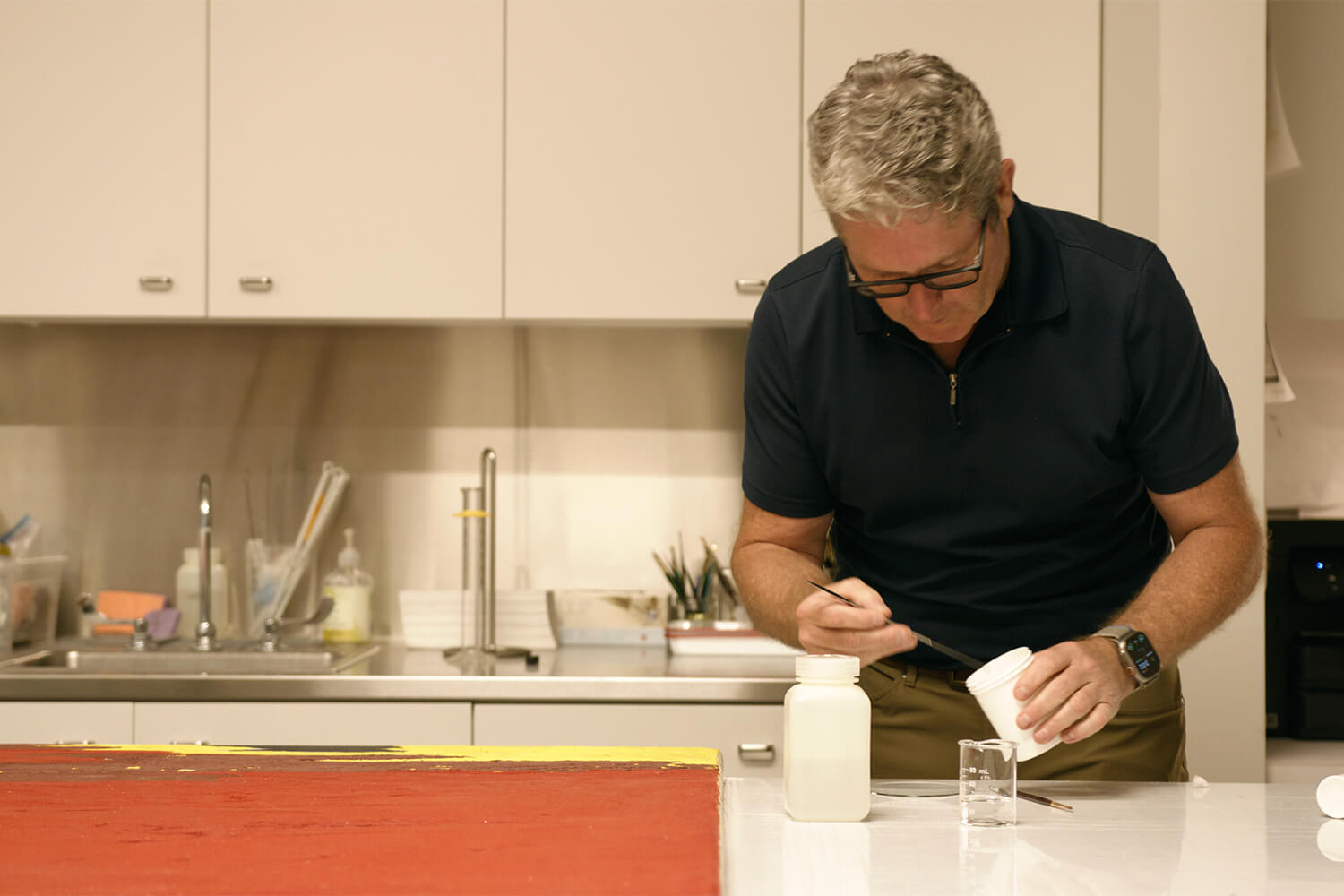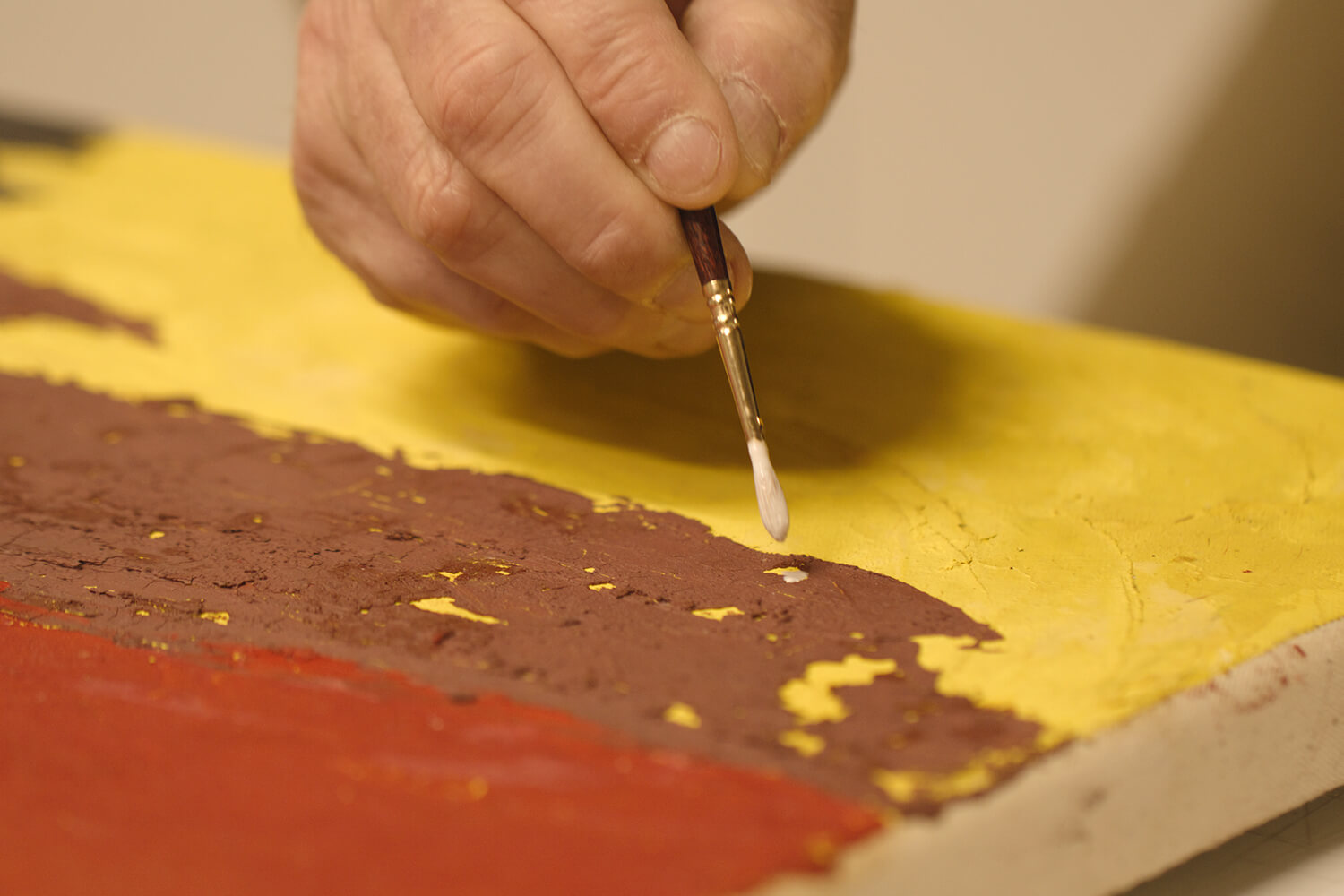Conservation is a multidisciplinary field that seeks to balance preservation of the Museum’s collections and public access to them. Conservators seek to preserve and interpret cultural objects through research of art and artists (and their creative methods), art history, materials science, and technology. Conservators’ expertise in art, art history, and materials (connoisseurship) helps them to understand an object’s physical and cultural context. This unique blend of knowledge informs a conservator’s work, allowing them, in practice, to concurrently honor both the artwork’s material history (and changes to it) and the artist’s original intent. Conservators try to preserve objects by limiting changes to them while performing restoration when damage has occurred. Through these research and advocacy activities, conservators enhance the understanding and interpretation of the collections in their care.
Conservation of the Clyfford Still Collection
Changes are inevitable, and these changes—whether physical, chemical, or visual—can alter an artist’s original work of art and affect the way viewers receive and understand that work. At the core of modern conservation practice is the study of these changes, which cannot be achieved without a thorough understanding of the artist’s materials and techniques. The discipline of art conservation is particularly relevant to the Clyfford Still collection. The Museum houses the majority of Still’s work, most of which has never been publicly viewed. Most of the paintings were rolled almost immediately after completion and have undergone a variety of changes that render some unexhibitable in their current condition. As stewards for the majority of this artist’s work, the Museum’s conservation team is tasked to interpret these changes and find the appropriate balance between materiality and intentionality. The ongoing care of the Clyfford Still Collection is critical to the Museum’s mission.
Condition of Still’s artworks
Since Still moved across the country several times and he did not have room to stretch and hang many paintings at a time, he stored the majority of his works by rolling them on cardboard or metal tubes, an average of six paintings per roll. Thankfully, they have shown very little physical damage such as cracks or missing paint (“losses”).
However, the artworks present other challenges. Often the paint was not completely dry before Still rolled the canvases. Alterations to the surface, especially in the thicker paint passages, and the transfer of the canvas weave onto the paint commonly occur when malleable oil paint is tightly rolled. Also, the Museum’s conservation team regularly sees a phenomenon called “fatty acid bloom,” which is the presence of a hazy, whitish film on the surface. This is caused by the paint drying in a closed environment, causing certain components to migrate upward. Additionally, it is not uncommon to find that the oil paint has darkened. The linseed oil in the pigment will discolor when not exposed to light, causing the surface to look dull and cast an uneven sheen.
The conservator’s challenge is to try to understand the changes that have taken place since the work was completed. The Museum must study Still’s technique and materials and, drawing on chemistry and connoisseurship, alter the paint surface to restore as accurately as possible the artist’s original vision.
Still’s works on paper were stored in 40 archival boxes, each work separated from the other by a sheet of interleaving paper. The majority of works on paper were received in good to excellent condition due to their storage; only 30 of the roughly 2,600 works needed immediate conservation treatment.



